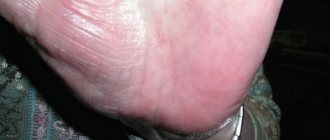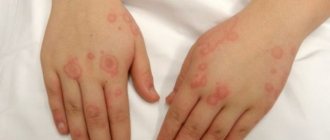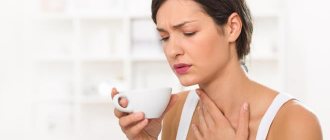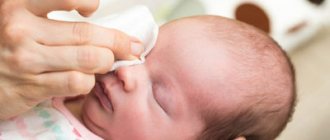Dyshidrosis is a skin pathology that manifests itself in the form of itchy blisters with transparent contents. This condition occurs both as an independent nosological unit and in allergic dermatitis, eczema, and mycosis. It is not contagious, but it is characterized by particularly unpleasant symptoms. Often, a dyshidrotic state accompanies pregnancy, since rapid hormonal changes occur in the body of pregnant women.
Causes
There is no specifically identified cause that leads to the development of the disease. Dyshidrosis is the result of a malfunction in the body of a pregnant woman. It develops due to disorders that occur in the digestive and endocrine systems. The disease can occur against a background of nervous exhaustion and allergic reactions.
Dyshidrosis most often appears in spring and autumn. The expectant mother's body is being rebuilt and this causes certain changes in the functioning of its systems. Often the cause of the disease can be a fungal infection of the skin, which leads to disruption of the functionality of the immune system.
There are factors that can provoke dyshidrosis.
- Constant and severe stress.
- Overwork.
- Taking foods that cause allergies.
- Bad habits, especially drinking alcohol.
- Contact with household chemicals and cosmetics.
The category of pregnant women who are prone to profuse sweating is susceptible to the disease.
Differential diagnosis
Hand dyshidrosis should be differentiated from the following skin diseases:
- Bullous impetigo is a type of streptococcal skin lesion. Infection occurs as a result of the penetration of pathogenic bacteria into the body through wounds, scratches or microcracks. The main symptoms include large hemispherical blisters in diameter (up to 2 cm), as well as weakness, fever and headaches.
- Pustular (exudative) psoriasis is the most severe and rare form of psoriasis. It is characterized by the appearance of purulent elements with serous contents, prone to fusion and the formation of skin erosions. Cases of secondary infection are common.
- Eczema is another dermatological disease in the form of papules. There is swelling of the affected areas of the skin, itching and an inflammatory process of an allergic nature. It can occur in acute and chronic form. The main reasons: vitamin deficiency, changes in the immune, digestive and excretory systems, inflammatory diseases and injuries to the nerve centers.
Symptoms
Often the symptoms are severe. Small blisters appear on the skin of the hands and feet. Over time they increase. Liquid can be seen through the dense shells. When pathogenic bacteria enter the body of a pregnant woman, inflammatory reactions occur, which are characterized by the appearance of purulent abscesses. The localization site swells and turns red.
The disease is also characterized by symptoms such as:
- intense itching,
- burning in the affected areas,
- painful sensations when combing.
The blisters on the skin burst. During this period, the following manifestations exist.
- Peeling of the skin.
- Formation of crusts and cracks.
No specific diagnostic methods have been developed. The doctor examines the patient and identifies the causes of dyshidrosis. He carefully studies the symptoms, taking into account the seasonality of relapses and their frequency.
The examination excludes skin lesions of fungal origin, since mycotic dermatitis has a similar clinical picture. To do this, a blood test is taken from the pregnant woman to exclude fungi.
Complications
The severity of dyshidrosis depends on the number and size of the bubbles. In most cases, full recovery is guaranteed. If treated incorrectly, the disease may recur after some time.
When small blisters become infected, pus accumulates. Pain, swelling, and redness of the skin may increase. This leads to a deterioration in the general condition of the expectant mother and an increase in body temperature. Blisters located nearby can turn into a continuous abscess.
The most severe complication is purulent inflammation of the finger. Inflammation of the lymphatic vessels occurs very rarely.
Dyshidrosis of the hands in children
Young patients in most cases suffer from skin diseases due to poor immunity and susceptibility to various types of allergies. Dyshidrosis in infants occurs due to the fault of the mother, when the woman consumes foods that provoke allergies.
Other reasons:
- improper diet;
- taking strong medications;
- overwork, stress;
- metabolic disease.
On the hands of children, as well as adults, small pinkish bubbles filled with liquid appear. The child scratches his hands, is nervous, and capricious.
In most cases, treatment of the disease does not involve any particular difficulties. Visit your doctor in a timely manner, follow his recommendations - and the disease will recede without serious consequences.
How to treat dyshidrosis in children? More effective drugs and methods are recommended:
- calcium supplements to strengthen the body;
- diuretics;
- lotions with lead water;
- baths with potassium permanganate;
- ointments with antibiotics for infection of the epidermis. Shown – Syntomycin emulsion, Levomikol;
- antihistamines – Diazolin, Suprastin;
- baths with sage, yarrow, string, oak bark, chamomile.
We offer you to read an interesting article about the first symptoms and treatment of scabies in adults and children.
How to treat prickly heat? Find out the answer at this address.
If you go here you can find out everything about the causes of folliculitis.
Treatment
If symptoms appear, it is better for the expectant mother to consult a specialist, since self-treatment or the use of traditional medicine will not eliminate them. In case of acute dyshidrosis, a pregnant woman should not wash her hands and feet using cosmetics or soap. Affected areas should not come into contact with allergens, such as household chemicals or acids.
The expectant mother, in parallel with the main treatment, can use traditional medicine. Herbal baths have a calming effect and disinfect. Procedures must be carried out with the permission of a dermatologist.
Medicines help fight the disease. The doctor may prescribe medications such as:
- ointments to relieve inflammation,
- antiallergic drugs,
- creams or sprays,
- special baths with a healing effect,
- diuretics,
- medications to normalize the functioning of the endocrine system.
If the blisters are infected and dyshidrosis is severe, the doctor prescribes antiseptics and antibacterial drugs. Therapy can be carried out at home under the supervision of a dermatologist.
A special diet may also be prescribed. The diet should exclude those foods that cause an allergic reaction. This can be salted, fried, smoked or fatty foods.
In specific cases, a dermatologist can use such means as:
- corticosteroids,
- sedatives,
- multivitamins,
- antifungal medications.
There are no universal medications, as the causes can be very different.
Do I need to follow a diet?
In addition to what has been said, the treatment complex involves following a diet. For a while, the patient should avoid:
- any sweets and spices;
- smoked meats and milk;
- eggs;
- citrus fruits, tomatoes, melons and nuts;
- fish.
With dyshidrosis, the patient should focus on consuming fermented milk products. They restore the functioning of the gastrointestinal tract and strengthen the immune system.
It is also recommended to include boiled vegetables and beef in your diet, especially raw cucumbers. You will have to give up fatty foods, including vegetable broths made with pork.
The same goes for baked goods and pasta.
Dyshidrosis is often caused by disturbances in the gastrointestinal tract, so diet is a very important element in the treatment of the disease.
It is necessary to avoid products containing gluten (gluten). Gluten is a substance found in cereals: rye, wheat, barley.
Manufacturers often refer to it as “hydrolyzed protein” or “modified food starch.”
Prohibited products include:
- bakery products and pastries;
- pasta;
- flakes;
- some sauces and yoghurts.
You should also reduce (but not eliminate!) salt intake, as this interferes with the normal removal of water from the body.
Possible allergens are also prohibited.
Post Views: 745
Prevention
The expectant mother should have a strengthened immune system. It is important to register on time, undergo all necessary examinations, and take tests. It is better if somatic diseases and allergic reactions are treated on time. The nervous system and gastrointestinal tract must function normally.
Pregnant women are recommended to have proper and balanced nutrition. She should avoid stressful and nervous situations. A healthy lifestyle and proper rest play a fairly important role. It is necessary to exclude contact with those substances that cause allergies. It is better for the expectant mother to take care of personal hygiene, promptly treat infectious diseases, and avoid damage to the skin. All injuries and inflammatory lesions must undergo appropriate treatment.
Have you been struggling with JOINT PAIN for many years without success?
Head of the Institute: “You will be amazed at how easy it is to cure your joints by taking the product for 147 rubles every day.
Dyshidrosis of the hands, the treatment of which must be started as early as possible, is a disease in which one of the symptoms is the appearance of blisters under the skin, their contents being liquid. As a rule, the palms and interdigital folds are involved in the lesion. Let us examine in more detail what other symptoms may occur with dyshidrosis, as well as what treatment is necessary for the disease.
Dyshidrosis of the hands, in other words, dyshidrotic eczema of the hands, is a chronic dermatological disease that can appear for many reasons. The erroneous opinion of many people is that the disease occurs due to blockage of the sweat glands, which are localized on the hands.
Our readers successfully use Artreid to treat joints. Seeing how popular this product is, we decided to bring it to your attention. Read more here...
Such a symptom may signal exhaustion of the body or a nervous breakdown that occurs in a protracted phase. In this case, it is recommended to restore lost emotional strength, for example, by drinking a cup of coffee with a piece of cake, sitting in front of your favorite movie. To reduce the risk of nervous breakdowns, it is necessary to systematically replenish the body with various vitamins and microelements that are beneficial for our nervous system.
Also, the cause of such rashes is an allergic reaction, because our body can express different reactions to irritants. In such cases, taking antihistamines is recommended. The external or internal irritant that caused such an allergic reaction must be excluded.
Another cause is a fungal infection or, in other words, mycosis. Pathology, on the one hand, is the cause of a rash on the skin, and, on the other hand, indicates that the immune system is too weakened and is not able to cope with an external irritant. In this regard, it is recommended to systematically strengthen the immune system by consuming enough vegetables and fruits. Products containing vitamin C are especially useful: blueberries, raspberries, currants, lemon, gooseberries and rose hips. The main treatment for mycosis is prescribed by a dermatologist.
If dyshidrosis is a consequence of dysfunction of those organs that help produce hormones, the disease occurs periodically throughout life, that is, it is seasonal. So, a rash on the hands appears either only in spring or only in autumn.
If we talk about the symptoms of a disease such as dyshidrosis, there are not many of them:
If dyshidrosis is not treated in time, the disease will occur with a number of other symptoms. So, there is a constant headache and general malaise that does not subside even after rest. There is also loss of appetite and increased body temperature. The intensity of such symptoms is more pronounced as the disease develops in children.
Due to the fact that all symptoms arise suddenly and entail the development of more serious consequences, treatment of the disease should be carried out under the systematic supervision of the attending physician. If any changes occur (in a negative direction), the doctor can easily adjust the direction of treatment.
If a characteristic clinical picture similar to manifestations of dyshidrosis occurs, the dermatologist must exclude the development of such diseases:
- Acute contact (allergic) dermatitis. This disease is characterized by the appearance of similar symptoms only on the hands. No symptoms are observed in other areas. Blisters may appear with dermatitis, but their characteristics differ from those with dyshidrosis: they are not transparent and have a different location.
- Dyshidrotic form of dermatophytosis. In the event that dyshidrosis also involves the feet, it is necessary to exclude dermatophytosis. The doctor performs microscopy, which helps identify the mycelium and spores of the fungus. A cultural study is also carried out - inoculation on a nutrient medium.
- Pustular psoriasis. In this case, it is necessary to find other lesions, since pustular psoriasis is not limited to symptoms only in the area of the palms and feet. If a symptom is detected on the outer surface of the elbows and knees, we can say with certainty that psoriasis of this form is developing.
- Scabies. In this case, the doctor checks the surface of the skin for the presence of the tick itself.
The disease must be treated comprehensively, using both systemic and local drugs. As systemic agents, the ideal option is Belloid and Furosemide in standard dosages. Antihistamines are also prescribed.
Local remedies - lotions using resorcinol solution. If secondary pathogenic microflora has joined, the affected areas are treated with a preparation with aniline dye. If the skin lesions are extensive and severe, corticosteroid-based ointments are prescribed. As a rule, these are products that contain hydrocortisone and prednisolone.
Since a secondary infection can occur, that is, pathogenic microorganisms can enter an open wound and thereby develop a secondary infectious process, treatment can be supplemented with antibiotic drugs.
Physiotherapy is an equally effective method of treating dyshidrosis. Thus, procedures such as laser therapy, ozone therapy, diadynamic currents, ultraphonophoresis and electrophoresis are effective. It is worth mentioning alternative medicine. Thus, the emphasis is on restoring the patient’s emotional background and eliminating stressful situations that may affect him.
Treatment with folk remedies can be carried out using herbs, for example, chamomile, sage, celandine, string, yarrow. Herbs can be added to baths for hands and feet where symptoms of dyshidrosis are common. Any herb can be poured with boiling water, left to steep for half an hour, and then strained. The bath product is ready.
Since the disease can occur in stages of exacerbation and remission, a person should know how to strengthen their immunity in order to thereby reduce the risk of symptoms. Of course, in each specific case of the disease, the symptoms may differ. It is for this reason that every person should know all the possible symptoms in order to consult a doctor in time if they occur.
It is necessary to know what factors can contribute to the worsening of the disease in order to, if possible, eliminate their effect on the body and skin. Unfortunately, a single treatment for all forms of the disease has not been found, but there are generally accepted methods of therapy, adhering to which, you can improve the quality of life.
2017-03-16
Dyshidrosis – Polismed
Dyshidrosis is a disease that manifests itself on the skin and is an option
eczema It is not considered a contagious disease and does not pose a danger to others, but it is symptomatic and extremely unpleasant.
The treatment tactics for the disease are selected comprehensively. This disease, unfortunately, occurs in phases with periods of relief and relapses (returns).
Even competent and professional treatment does not guarantee periodic cases of the disease returning.
Types of disease
Dyshidrosis, which is also called eczema, has two types:
- dyshidrosis of the skin of the hands;
- foot dyshidrosis.
The disease most often begins in those people who have increased sweating of the palms and soles.
Causes, factors of occurrence, ways of spreading dyshidrosis
The cause of dyshidrosis is blockage of the sweat ducts. But several points can provoke the beginning and development of this process:
- Firstly, allergies to detergents and powders, insecticides (insect control agents) and any other type of household chemicals that we use.
- Secondly, allergies can also be caused by food products - mushrooms, strawberries, wild strawberries, exotic fruits.
- Thirdly, the cause of dyshidrosis is often pathologies of the endocrine system or various immune disorders
- Fourthly, doctors note that people who are in a state of stress, nervous tension, and increased mental and physical stress are susceptible to the disease.
- Fifthly, dyshidrosis often appears as a result of experiences of unrest, emotional instability, neuroses, and after severe fright.
Dyshidrosis can be provoked by hyperhidrosis or various neurovascular disorders.
Signs and symptoms of dyshidrosis
The first sign of the disease is the appearance on the palms or soles of multiple blisters filled with colorless liquid. The onset of the rash is accompanied by a burning sensation and severe itching.
The bubbles are dense and transparent to the touch, ranging in size from 1 to 4 mm. The symptomatic picture is aggravated by swelling and hyperemia (redness) in the places where the blisters appear.
Very rarely, bubbles are found on the contacting surfaces of the fingers and on the back of the hands.
Dyshidrosis is a chronic disease, relapses occur during the off-season. This is a fairly common type of palm eczema, affecting about 30% of people prone to allergies.
This disease occurs in young people or adolescents, but cases of primary manifestation after 40 years are not uncommon. The disease is not transmitted by contact, but it causes a lot of inconvenience and suffering to a person, which significantly reduces the quality of his life.
Complications of the disease
The main danger with dyshidrosis is scratching areas that cause itching, resulting in infection and yellow purulent contents appearing in the blisters. The disease can develop into a severe form of eczema with peeling of the palms, cracks and purulent discharge, so it is important to prevent re-infection.
In the absence of timely and adequate treatment, dyshidrosis can be complicated by panaritium or lymphangitis.
Diagnostics
Since the exact causes of dyshidrosis have not been studied, there are no specific methods for determining the disease, therefore, when determining the diagnosis, they mainly rely on the presence of visible manifestations of this ailment. An important diagnostic criterion is the frequency of exacerbations of the disease.
When making a diagnosis, diseases with similar symptoms are first excluded. For example, mycotic (fungal) skin lesions, cases of dermatitis, which also affect the palms and feet, have similar symptoms. Therefore, in order to establish an accurate diagnosis, the patient is prescribed tests to detect fungi.
Treatment of dyshidrosis
Dyshidrosis, like any other chronic disease, is prone to repetitions (relapses), so patients are registered with a dermatological dispensary.
Treatment of dyshidrosis will be ineffective without identifying and eliminating the root cause of the disease. In general, therapeutic measures are aimed at eliminating symptoms and include the use of local as well as systemic therapy.
To achieve dehydration of the vesicles, I prescribe diuretics to the patient - diuretics, and to relieve an allergic reaction - antihistamines.
Sedative (calming) drugs and drugs with general strengthening properties will be useful.
As a rule, the course of treatment for dyshidrosis also includes local procedures: application of zinc ointment, Advantan emulsion cream, permanganate baths, lead water lotions, treatment of the skin with a resorcinol solution.
If the disease is severe, corticosteroids must be used in the form of ointments. In case of re-infection, use antibacterial ointments. Physiotherapeutic methods of therapy have a beneficial effect on the course of treatment. Patients are offered ultraphonophoresis with drugs, laser and ozone therapy, exposure to diadynamic currents on the skin, etc.
Treatment of dyshidrosis with folk remedies
It would be a mistake to neglect the methods of traditional medicine in the treatment of dyshidrosis, which offers us a whole range of ways to combat this disease. These procedures are simple and easy to do at home, and most importantly, they are effective. Some significantly alleviate the course of the disease.
We list the most effective of all available:
- A mixed composition of low-fat fresh sour cream with the addition of oatmeal, prepared in equal parts. This specific substance is applied in a thick layer to the inflamed skin, then covered with a clean cloth, left for up to 20 minutes, and removed without rinsing. The procedure allows you to relieve the itching and burning of painful areas of the skin for a long time.
- An infusion of chamomile flowers, a collection of knotweed stems and roots, corn silk and hair, dry yarrow and calendula leaves are taken orally.
- It is especially necessary to highlight the healing properties of oak bark, from which they make a miracle - a decoction (5 tablespoons per 1 liter of water, boil for 20 minutes, let it brew). It is used for baths and as a lotion to sore spots (daily for 15-20 minutes).
- Blackberry leaves, succession, chamomile flowers, celandine, sage, succession. The recipe is simple: 10 tablespoons of any of the listed herbs must be poured into 1 liter of boiling water, then brought to a boil and kept in a water bath for half an hour. After all this has been done, the broth must be filtered and diluted with 5 liters of warm water. For acute manifestations of the disease, baths can be used frequently, for 15-20 minutes every hour throughout the day.
Side effects in the treatment of dyshidrosis
During the treatment of dyshidrosis, patients are most often prescribed hormonal ointments and corticosteroids. These drugs are more like “first aid” drugs for patients with dyshidrosis; they have a number of side effects.
Complications include: atrophy, vascular fragility, purpura, linear pseudoscars, ulcerations.
The use of drugs for repeated infections increases the risk of a more severe course of the disease, so only a dermatologist decides how appropriate it is to prescribe certain drugs.
Disease prevention
To prevent dyshidrosis, it is necessary, first of all, to especially protect the skin from possible adverse and traumatic effects. Be careful when handling household chemicals, use protective gloves and pay more attention to hygiene. It is necessary to take walks in the fresh air, review your diet, and use your free time for maximum health benefits.
Those who have already been diagnosed with dyshidrosis will have to eliminate or minimize contact with household chemicals. When performing housework, rubber gloves must be worn over cotton gloves. It is recommended to wash your hands with soft, neutral soaps.
Diet for dyshidrosis
Nutritional methods for patients with dyshidrosis should be carefully thought out. It will be useful to exclude foods high in carbohydrates from your usual diet.
Pay attention to the products that most often cause allergens in the body. These include citrus fruits, raspberries, all types of coffee, tomatoes, smoked products, cocoa and chocolate, spicy foods, and alcohol-containing drinks.
They should also be either completely excluded from the diet or significantly reduced in consumption.
If symptoms of dyshidrosis appear, increase the amount of fermented milk products in your diet. First of all, low-fat cottage cheese, low-fat kefir, natural yogurt without impurities and yogurt. Vegetable soups, a variety of water-based porridges, sunflower oil, fresh cucumbers, salad, baked and boiled potatoes are very healthy.
Dyshidrosis in children
Childhood dyshidrosis is no different from adult dyshidrosis - the same lesions on the hands and feet are observed.
Due to blockage of the ducts of the sebaceous and sweat glands, the above-described blistering rashes with characteristic itching are noticeable.
The immunity of such children, as a rule, is weakened, various allergic reactions, as well as a disturbed and unbalanced diet lead to metabolic disorders.
In infants, symptoms of dyshidrosis may occur due to poor maternal diet. Parents should monitor their child’s accidental intake of medications and completely avoid contact with chemicals. A stress reaction or overwork can also provoke the appearance of the disease in a child.
Features of the course of the disease in pregnant women
Treatment methods for dyshidrosis in pregnant women differ. In this case, it is important not to harm the child’s developing body. The specialist prescribes treatment, taking into account its possible side effects and the expected risk for the normal development of the fetus. Treatment of manifestations of dyshidrosis in pregnant women occurs according to the standard regimen. Appointed:
- antiallergic drugs;
- zinc ointment;
- Advantan cream emulsion.
Baths with potassium permanganate and treatment with calcium preparations (calcium chloride, calcium gluconate) are acceptable. However, doctors recommend that expectant mothers pay attention to the benefits of traditional methods of treatment.
Source: https://polismed.ru/disgidroz.html
What is the difference between dyshidrosis and dyshidrotic eczema?
The difference between these two diseases is visible in the symptomatic manifestations:
- With true dyshidrosis, blisters form only on the palmar surface of the hands. The rash lasts up to 10 days, then the blisters dry out and subside. When the covers of dried blisters are damaged, superficial erosions form and moderate pain occurs.
- In the case of dyshidrotic eczema, swelling, a blistering rash occurs, and the number of blisters increases. After a few days, the covers of the bubbles open and weeping begins. The temperature often rises, the area of the rash swells, itches and hurts.
Symptoms of dyshidrosis and dyshidrotic eczema
The main symptomatic manifestations of dyshidrosis are:
- the appearance of bubbles on the palms, and not on the hands as a whole;
- the acute stage of the disease is observed in the autumn and spring;
- the bubbles do not exceed the size of a pinhead and are not translucent;
- after 10 days the formations regress;
- in places after the collapse of the bubbles, erosions form.
Dyshidrotic eczema has its own symptoms:
- appears after nervous experiences;
- The disease can be provoked by contact with substances that irritate the skin surface;
- the skin of the hands swells;
- redness is observed;
- the formation of a large number of small bubbles;
- characterized by swelling in the area of the lymph nodes;
- temperature rises to 38 °C;
- in the areas of the rash there is a feeling of itching, burning and pain;
- weakness and headache occur;
- exacerbation can occur regardless of the underlying causes;
- poorly treated.
If dyshidrosis is not treated and prevented in a timely manner, the disease may progress to dyshidrotic eczema.
Dyshidrosis of the hands
Hand dyshidrosis is a disease characterized by the appearance of blisters in the palms of the hands and between the fingers. Treatment of such a pathology is possible only with an integrated approach to therapy and the correct choice of medications.
There is still debate about determining the root causes of this disease:
- Allergy:
- Fungal infections.
- Disturbances in the functioning of the sweat glands.
- Skin reaction to contact with household chemicals.
Dyshidrosis of the feet
Plantar dyshidrosis is ten times less common than a similar disease of the hands. In this case, small bubbles are localized in the area of the feet.
A connection has also been established between the influence of a number of factors and the occurrence of such pathology:
- Presence of this disease in relatives:
- parents;
- grandparents;
- brothers and sisters.
- Allergic manifestations in the body.
- Weakened immunity.
- Working with household chemicals.
- Diseases of the digestive system.
- Psychological tension.
Treatment of dyshidrosis and dyshidrotic eczema
To cure such dermatological diseases, complex therapy is used based on:
- Physiotherapy (normalizes the state of water metabolism in the skin).
- Local treatment (eliminates the main symptoms of dermatological pathologies and accelerates the healing process of erosions on the skin).
- Systemic treatment (normalizes the functioning of internal organs).
- Treatment with folk remedies (symptomatic treatment based on medicinal herbal preparations).
Systemic treatment
To cure dyshidrosis and dyshidrotic eczema, it is necessary to determine the root causes of their occurrence. If the occurrence of dyshidrosis is associated with a somatic disease, it is necessary to take measures to eliminate it or stabilize the general condition.
Most often, to treat dyshidrosis and dyshidrotic eczema, the patient is prescribed:
- hypoallergenic diet;
- antihistamines;
- ointments:
- glucocorticosteroids;
- antiexudative;
- lotions;
- penicillin antibiotics;
- phytotherapy.
Ointments for dyshidrosis
Since this disease can occur in a chronic form, it is necessary to register all patients with a dermatologist.
The best therapeutic effect on the external manifestations of the disease is provided by:
- use of ointments;
- use of Advantan;
- periodic baths with potassium permanganate;
- use of a solution with resorcinol.
For severe symptoms, corticosteroid-based ointments are used. In addition to the anti-inflammatory effect, such drugs may have a number of positive properties for the restoration of the skin. Below are the main preventive and therapeutic drugs for dyshidrosis.
Fluorocort
It fights not only dyshidrosis quite effectively.
This remedy is prescribed for a number of dermatological diseases:
- Psoriatic arthritis.
- Systemic lupus erythematosus.
- Dermatitis: exfoliative;
- herpetiform;
- bullous;
- seborrheic;
- contact;
- atonic.
Fluorocort is often prescribed for varicose dermatitis, relieving inflammation and itching. You can look at photos of dermatitis on the legs and read what other remedies help with this disease.
However, there are a number of contraindications to this drug:
- Hypersensitivity.
- Osteoporosis.
- Acute viral and bacterial infections.
- Pregnancy.
- Lactation.
- Children's age up to 6 years.
Losterine
The ointment quite effectively combats the symptomatic manifestations of many dermatological diseases.
Has a positive effect on the skin, namely:
- Has an antibacterial effect on the skin.
- Stimulates skin regeneration processes.
- Softens and affects the resorption of scar tissue, burns, ulcers.
- Regulates metabolic processes.
Due to its wide range of positive effects on the skin, this drug is often prescribed for the treatment and prevention of a wide range of dermatological diseases.
Triderm
Possesses:
- antibacterial properties of topical application;
- antiallergic characteristics;
- exhibits an antiexudative effect;
- has antifungal activity.
Source: https://zdorovo.live/kozha/pryshhi/prichiny-razvitiya-i-lechenie-disgidroza-u-beremennyh.html
Causes
Despite more than 150 years of clinical history, the causes of dyshidrotic eczema are still unclear. The disease is most often considered as one of the symptoms of an allergic reaction provoked by food or drug hypersensitivity.
In addition, it has been noted that this form of eczema often appears after immediate stress or prolonged nervous tension, which may be associated with genetic inheritance.
Excessively dry or sensitive dermis of the hands and feet, as well as working in damp conditions or frequent contact of the skin with cement, nickel, asbestos, chromium and other aggressive substances can also increase susceptibility to dyshidrotic eczema.
In many patients, dyshidrotic eczema of the hands and feet occurs against the background of previous or existing diseases:
- endocrine system disorders;
- metabolic deterioration;
- decreased immunity;
- avitaminosis;
- improper intake and use of medications;
- various minor injuries to the skin of the hands and feet;
- hyperhidrosis;
- severe infectious diseases;
- violation of hormonal status.
An exacerbation of dyshidrotic eczema can also be caused by poor nutrition, addiction to all kinds of diets, frequent fasting, nervous or physical exhaustion.
Symptoms
The first sign of eczema is at first mild, and then increasingly intensifying itching of the affected areas of the skin. Symptoms gradually increase, the dermis at the site of inflammation becomes irritated, reddens and thickens.
Bright pink, disturbing blisters with serous contents appear on the fingers, palms or soles. A feature of dyshidrotic eczema is the deep occurrence of vesicles - at the level of the epidermal layer of the skin.
As dyshidrotic eczema develops, the rashes burst and dry out or form weeping erosions. The process of opening the bubbles is accompanied by changes in the structure of the dermis - it begins to actively peel off, turns red and cracks. If pathogenic microflora penetrates into the wounds, purulent inflammation joins dyshidrotic eczema and pyoderma begins.
This development of the disease leads to the formation of pustules, a deterioration in the patient’s general well-being - the temperature rises, the inflamed palms and feet begin to swell and begin to hurt, and nearby lymph nodes increase in size.
The dyshidrotic form of eczema quickly becomes chronic, occurring in several stages simultaneously, i.e., the skin has a primary rash, ruptured vesicles, erosions, purulent pustules and drying crusts. It is difficult to cope with such a pathology - inflammation constantly worsens from the slightest environmental influence.
Which doctor treats dyshidrotic eczema?
If you experience itching, tingling and irritation of the skin on your hands and soles, you should immediately consult a dermatologist. If there is no such specialist in the local clinic, you should postpone the voucher to the local physician. There is no point in delaying contacting a doctor, because the earlier treatment is started, the greater the patient’s chances for a full recovery.
Treatment of eczema
Medical care for dyshidrotic eczema should be comprehensive. The first step is to localize the probable cause of the Pompholyx outbreak and create a favorable psychological climate for recovery. Then symptomatic therapy should be carried out and signs of malaise should be eliminated.
Antihistamines
Systemic treatment for dyshidrotic eczema necessarily includes the use of antiallergic drugs. It is better if these are antihistamines of 2 and 3 generations. They have fewer adverse reactions, do not cause drowsiness and allow you to drive vehicles.
The following medications will help eliminate itching and inflammation of the skin with dyshidrotic eczema:
- Zyrtec.
- Claritin.
- Erius.
- Citrine.
If unpleasant symptoms prevent you from falling asleep, it is better to use 1st generation antihistamines. They will relieve insomnia, relieve tension and calm the nervous system.
Dyshidrotic eczema on the legs is often accompanied by the addition of mycosis. In this case, the complex of therapeutic measures must be supplemented with antifungal drugs.
Pain in fingers during pregnancy
During pregnancy, the expectant mother's body undergoes serious changes associated with increased stress on the body and hormonal changes. In addition, all systems are extremely susceptible and sensitive to any pain, including in the fingers. In most cases, this condition is not considered a disease, but in order to avoid various complications, experts recommend that you definitely get rid of pain in your fingers during pregnancy, but only after the cause of their occurrence has been determined.
Among the reasons why the joints of the fingers hurt during pregnancy, there are two groups:
This category includes factors that occur exclusively during pregnancy and disappear after childbirth. These include a hormonal surge during gestation (pregnancy) and hypocalcemia in pregnant women. Such physiological deviations contribute to the development of fibromyalgic and tunnel syndrome.
This group is characterized by true articular pathologies with various etiologies of development, which worsen during pregnancy (trauma, arthrosis, arthritis, etc.). Such diseases cannot go away on their own even after delivery. In addition, the lack of therapeutic measures can lead to complications that negatively affect not only the expectant mother, but also the baby.
There are quite a few diseases that a woman may not pay attention to before pregnancy, but the body’s defenses aimed at preserving the child may weaken, thereby provoking an exacerbation of chronic processes.
Why the finger joint hurts during pregnancy is determined based on a clinical examination of the patient and the necessary diagnostic measures. The presence of predisposing factors significantly increases the risk of developing certain pathologies.
We will indicate the most common causes of this condition.
For pain in pregnant women, it is necessary to exclude carpal tunnel syndrome or carpal tunnel syndrome. Most often, this pathological condition is observed during monotonous activities, for example, among computer scientists, pianists, seamstresses, etc.
Carpal tunnel syndrome may manifest itself with the following symptoms:
- pain in the palm area;
- slight tingling and numbness of the skin at the site of inflammation;
- weakness and decreased sensitivity of the thumb and index finger.
In almost every case, carpal tunnel syndrome is accompanied by severe pain, which intensifies with static tension on the hands.
In the last trimester of pregnancy, women may experience not only pain in their fingers, but also in their knees, which is caused by an exacerbation of osteoarthritis. Articular cartilage can undergo changes at any age, but most often various types of injuries lead to this condition.
Osteoarthritis is accompanied by more severe symptoms than ordinary arthritis or arthrosis, and is manifested by the following symptoms:
- friction and crunching appears in the joints;
- joint mobility is limited;
- fingers are deformed;
- a general and local increase in body temperature is possible.
Progression of the process leads to a significant decrease in motor activity in the joint and requires correction of the patient’s condition.
Quite often there are cases when the patient’s pain is caused by insufficient intake of microelements and vitamins, primarily as a result of poor nutrition. This condition negatively affects the formation of the baby’s skeletal muscles.
In addition, a decrease in calcium is accompanied by pain in the joints and destruction of cartilage tissue. A similar condition is observed not only in large joints, but also in the feet, as well as in the hands. Therefore, it is extremely important to monitor calcium metabolism in pregnant women.
Discomfort in the hands that occurs during gestation may be due to the physiological transformation of the interphalangeal joints. A similar condition is possible with an increased level of relaxin (a polypeptide hormone), which causes softening of the ligaments, preparing the woman for childbirth.
In addition, softening of articular cartilage can be caused by calcium deficiency. In this case, the changes that have occurred in the body are manifested by inflammatory processes in the joints and are accompanied by pain symptoms that are long-lasting and aching in nature. However, it is important to consider that, as a rule, this condition disappears immediately after childbirth.
Swelling and tenderness in the fingers, occurring symmetrically on both extremities, are most often characteristic of fibrositis or fibromyalgia. This disease occurs as a result of stressful situations and nervous overstrain, chronic insomnia caused by increased production of the pituitary gland during the phase of deep dreams, etc.
The following symptoms are typical for women suffering from fibromyalgia:
- stiff fingers in the morning;
- increased anxiety;
- depression and weakness;
- depression and general deterioration.
In addition, patients may complain of gastrointestinal upset and increased fatigue, sensitivity to cold and painful stimuli, stuffiness, etc. As a rule, in this case, the woman is recommended to get proper rest and relieve emotional stress, after which the symptoms of fibromyalgia disappear without a trace.
Natural suppression of the immune system (immunosuppression) during pregnancy is a unique phenomenon. In this state, immunity is reduced in order to avoid rejection of fetal antigens, which for the body are, in fact, half foreign proteins. At the same time, the expectant mother becomes more susceptible to various diseases, including joint diseases.
There are a fairly large number of diseases when the fingers and joints swell, which indicates an inflammatory process. Many of them worsen during pregnancy. Particularly dangerous are rheumatoid arthritis, systemic lupus erythematosus and gout.
All these diseases occur with damage to the joints and are accompanied by the following symptoms:
Our readers successfully use Artreid to treat joints. Seeing how popular this product is, we decided to bring it to your attention. Read more here...
- the patient feels morning stiffness in her hands;
- small joints of the hands are affected symmetrically, in addition, there is deformation and damage to internal organs, which is most often observed in rheumatoid arthritis;
- with gout, swelling of the 1st metatarsal phalanx of the joint and the formation of tophi are noted;
- With systemic lupus erythematosus, hyperemic skin lesions are present.
In addition, pain in the fingers of women may be associated with the initial stage of development of infectious processes, which requires additional diagnosis and careful observation by the attending physician.
Depending on the cause of the development of pain symptoms, the attending physician selects the optimal treatment tactics, which consists of several stages.
Medicines are prescribed only when absolutely necessary, taking into account the possible negative consequences not only for the mother, but also for the child, which makes therapeutic intervention extremely cautious.
If the doctor does prescribe drug therapy, it includes:
- if carpal tunnel syndrome develops, it is recommended to take vitamin B6, as well as wearing a special wrist splint;
- insufficient amount of calcium in the body is compensated by taking vitamin D and calcium-containing medications;
- when the immune system is weakened, Interferon (suppositories and ointment) is prescribed;
- fibromyalgia requires careful use of Prebagalin and Neurontin;
- for chronic joint diseases accompanied by pain in the fingers, the doctor may prescribe non-steroidal anti-inflammatory drugs, salicylates and hormones. However, such therapy should be performed under the strict supervision of the attending physician.
If there is even the slightest opportunity to avoid the use of medications, you should definitely take advantage of it by resorting to traditional recipes, physiotherapy and exercise therapy.
Not all physiotherapeutic measures can be used by pregnant women, but some of them do not have a negative effect on the fetus, especially when acting locally on the upper and lower extremities. Such procedures include UHF, electrophoresis, balneotherapy, mud therapy and paraffin therapy.
Physical therapy and massage, in which you can rub, squeeze and stroke your hands, have a positive effect on joints. Exercise therapy increases blood circulation, thereby reducing pain symptoms. If pain in the fingers appears, you should be extremely careful about such manifestations and immediately contact a gynecologist to decide on further therapy.
In most cases, traditional healers' recipes (ointments, baths, rubbing, etc.) are preferred over medicines, which are based on natural ingredients and can rarely harm the mother and child.
The most popular recipes for relieving pain in the arms are:
- You can prepare a hot bath with the addition of 30 grams. sage herbs per 1.5 liters of water, after which the solution is infused for 2 hours. After the allotted time, the infusion is filtered and diluted with 1 glass of hot water. Hands should be kept in sage for at least 15 minutes, the duration of therapy is 2 weeks.
- Heat a little sea salt in a dry frying pan, then wrap the salt in a towel and apply it to your fingers when severe pain occurs when bending. After the salt has completely cooled, the bandage should be removed and your hands should be lubricated with fir oil.
- Healing clay, which is sold in any pharmacy chain, should be diluted with warm water to a paste-like state, and then applied to the sore joint as a compress. The procedure is best done before bedtime. The duration of use of such compresses depends on how long it takes for the pain symptoms to completely disappear.
- A half-liter jar is filled with Kolanchoe leaves, then it is filled to the top with alcohol, followed by infusion in a dark, cool place for a week. After the tincture is ready, it is recommended to rub your fingers with it at least 3 times a day.
Despite the effectiveness of traditional recipes, their use should always be agreed with your doctor. This will avoid allergic reactions and other complications in the future.
To prevent the development of pain symptoms in the hands during pregnancy, you need to walk in the fresh air more often and normalize your diet and daily routine. In addition, the woman is encouraged to do an independent massage of her hands (clenching and unclenching her fist), which will allow her to relax her joints and relieve tension, avoid increased stress on her hands and monotonous movements, and also take the correct position in her sleep.
In most cases, discomfort in the fingers, as well as other symptoms, go away on their own within 1 month. If such symptoms persist, careful diagnosis and observation by the attending physician is required.
Dyshidrosis is a skin pathology that manifests itself in the form of itchy blisters with transparent contents. This condition occurs both as an independent nosological unit and in allergic dermatitis, eczema, and mycosis. It is not contagious, but it is characterized by particularly unpleasant symptoms. Often, a dyshidrotic state accompanies pregnancy, since rapid hormonal changes occur in the body of pregnant women.
Folk remedies
Treatment with folk remedies has a positive effect in combination with traditional drug treatment.
As a rule, infusions and decoctions of medicinal herbs are used. Here are some of the effective folk recipes:
- Take 2 tablespoons of sage, chamomile, string and pour 2 liters of hot water over the herbs, boil for 5 minutes, then leave covered for half an hour. Strain and dip your hands in the infusion for 20 minutes.
- Pour a handful of crushed oak bark into a liter of water, boil for 15 minutes, then let it brew and cool slightly. Place your hands in the warm broth and hold for 20 minutes.
A mandatory part of the treatment of this disease is local therapy aimed at softening the affected areas of the skin, drying out watery blisters, relieving inflammation and allergies.
For this, various ointments, oils, lotions and pastes are prescribed. If a secondary infection occurs, ointments with antibiotics must be prescribed.
For external use you can successfully use:
- potassium permanganate;
- resorcinol;
- chamomile herbs;
- sequences;
- St. John's wort, from which you need to make warm baths or lotions.
It is recommended to carry out such procedures 2 times daily.
Folk recipes to cope with this disease include bath recipes. These include:
- Baths with chamomile, string and sage.
To prepare it you will need about 6 tablespoons of these plants. Fill them with a liter of boiling water, bring the mixture to a boil, and then leave to infuse for 30 minutes. At the end it is filtered and added to a container in which the patient will then hold his hands. The procedure time is 20 minutes.
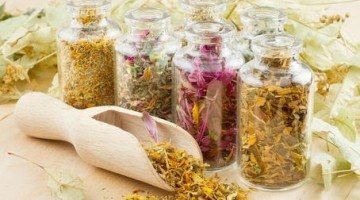
In this case, you will need 5 tablespoons of the plant, which are filled with 5 liters of water. Boiling the mixture over low heat lasts no more than 20 minutes. Then you need to leave it for 30 minutes, then strain. The procedure time does not exceed 25 minutes.
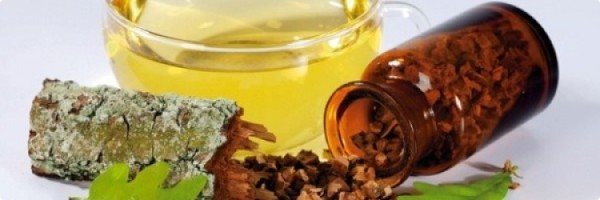
The natural remedy Oak Bark can be purchased at any pharmacy.
Varieties
Several types of dyshidrosis are classified:
- True. With this type, the rash is localized only on the surface of the palms. The blisters have a hard covering and are localized in the deep layers of the skin. After 10 days they dry out and soon open. This entire course is accompanied by severe itching. A distinctive feature of this dyshidrosis is the absence of new lesions.
- Dry lamellar. It is characterized by distribution in hot and dry climates. The blisters do not fill with liquid, but arcuate or ring-shaped peeling appears on the extremities. Pain and itching are extremely rare.
- Dyshidrotic eczema. It is characterized by a sudden onset, the provoking factor being contact with household chemicals or stress. Previously, the skin becomes red and swollen. The bubbles have transparent contents and increase in number. After a certain time, they are opened with increasing swelling. Further, a secondary infection may occur and the inflammation becomes purulent.
Etiology and modes of spread
Dyshidrosis is caused by some dysfunctions in the body. Pregnancy becomes a provoking factor when:
- immunity disorders;
- pathologies of the endocrine system;
- allergies;
- VSD;
- gastrointestinal dysfunction;
- metabolic disorders.
We should not forget that dyshidrosis also has a hereditary tendency, especially if someone in the family already has this disease.
Another provoking factor may be severe stress or working with household chemicals. This condition is rarely caused by medications.
Symptoms
In the initial stages, tingling and slight itching are felt. Locally, an increase in skin temperature is detected, but with no redness. Further, dense bubbles with clear liquid appear in the deep layers of the skin. Later they merge, open, and cracks form. All this is accompanied by severe pain.
The dynamics of dyshidrosis look like this:
- Stage 1 – the appearance of small blisters that cause itching and burning.
- Stage 2 – swelling of the skin of the palms.
- Stage 3 – formation of erosion and cracks.
- Stage 4 – the healing process, accompanied by peeling.
When transformed into dyshidrotic eczema, symptoms of astheno-vegetative syndrome occur:
- headache;
- malaise and weakness;
- lack of appetite;
- enlargement of regional lymph nodes;
- low fever.
In this condition, it is necessary to immediately contact a dermatologist or, if the patient is pregnant, then a gynecologist, since it is dangerous and often leads to complications.
The main danger is the addition of a secondary infection when scratching. In the absence of timely treatment, the pathological process can develop into lymphadenitis, lymphangitis or panaritium.
